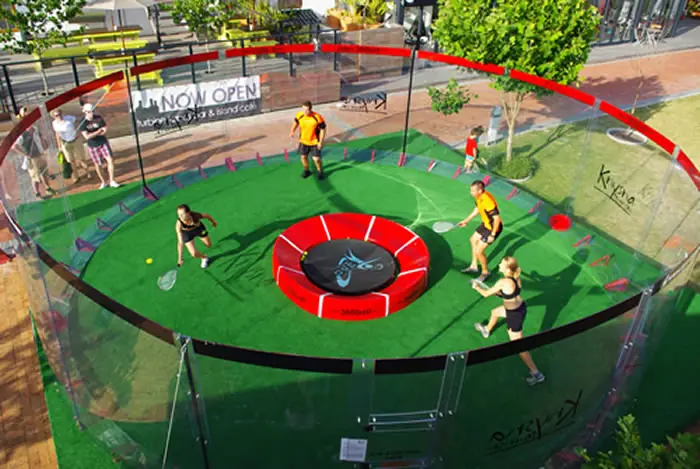20 October 2022 / 3-Min Read / Translate
This is one key element that seems to be forgotten when discussing rules, specifications etc: there’s nothing stopping you and your friends from building a squash court to any size you want and using equipment to any specification you want. That’s exactly how Squash came about! Sport is littered with people taking sports and changing it slightly.
Rugby and American Football are perfect examples. Rugby was invented when a player picked up the ball during a football match and ran with it. American Football was created from football and rugby. There is nothing stopping you from inventing a new sport today.
Still not convinced? Checkout 360Ball. Invented in the 1980s by two brothers, using their hands and a board, it has now evolved into a global sport. Sarcastic Comment: “Will probably get into the Olympics before squash!”.

It's called 360Ball!
Okay, sorry I got a little carried away in my introduction. My point being that unless you want to play official tournaments and matches, you don’t need to worry about the World Squash Federation rules and specifications. Most people do though, so yes, squash courts, rackets and balls are all specified in official rules.
No matter the size of the court, each facility has a slightly different environment. In 95% of cases the differences are too small for the average player to notice, but in some cases the temperature or humidity can make a big difference. Some courts are fast, some slow, some hot, some cold. You can’t regulate that aspect.
About 45 minutes away from where I live there are 3 courts in a sports centre. The town is called Eibar and my understanding is that they had this area that could be used for squash courts but it wasn’t big enough for 3, so they had a choice. Build two proper sized courts and have an odd space left over, or build 3 with each about a racket head’s width too narrow. As you know from the first sentence, they built 3 courts.
Much to my embarrassment, I didn’t notice the first time I played on them. I’d like to say that “I thought something was strange“, but I can’t. I really didn’t notice. In my defensive, I had only just started playing again after a very long break and the courts are badly lit.
I’ve played on the two extremes of indoor squash courts. One court at the Lansdowne Club had the ceiling at the same height as the outline on the front wall. It was hated by most squash players, although I like it as it was completely enclosed – no viewing gallery either. It really focused your mind. I’ve also coached on a now-demolished court at the BBC in London where the ceiling was at least twice the height as the front wall.
Very few squash courts have the same ceiling arrangement. Not just the height though; the lighting, the supports, fans etc etc. This is where squash courts really can express their personality and character. It’s where home-court-advantage can really take effect and shape players’ tactics.
Forgive me if I have wandered a little from the title topic. “Yes” seems such a lacking response. But, yes, all squash courts are supposed to be the same size. Same as the rackets and balls, but as we know, rackets come in various weights and balances, and balls come in different bounces etc.